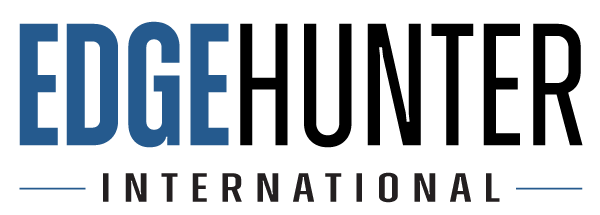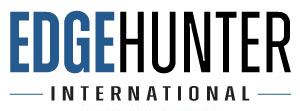The March 2025 Jobs Report shows continued strength in the U.S. labor market, with 228,000 new jobs added and unemployment ticking up slightly to 3.9%. Despite ongoing economic uncertainty and mixed forecasts, employers are prioritizing essential hires and increasing their use of contract professionals to remain agile and productive.
This article explores what’s driving these decisions and how recruiters can adapt to meet hiring demands in today’s fast-moving market.
Unemployment Rate Edges Up
The economic outlook for 2025 is characterized by a dichotomy between optimistic growth projections and cautionary warnings. While some economists and institutions anticipate continued expansion and controlled inflation, others highlight the risks posed by trade policies and fiscal challenges.
The March 2025 Jobs Report confirms what many employers already know: the labor market is still competitive, especially for skilled professionals. Even with a slight rise in unemployment, top-tier candidates in tech, HR, and business support roles remain in high demand—and hard to find. For hiring managers and recruiters, this means the margin for hiring error is small and the pressure to move fast is real.
-
Overall unemployment rate: Increased slightly to 4.2% from 4.1% in February.
-
College-degreed professionals (25+): Unemployment rose to 2.6% from 2.5%.
-
Notably low unemployment rates:
-
Financial and investment analysts: 1.9%
-
Office and administrative workers: 1.3%
-
Human resources managers: 0.6%
-
Paralegals and legal assistants: 0.4%
-
Network architects and web developers: 0.3%
- Web developers and network architects: 0.3%
-
Get more insights into labor markets and wage trends from The Federal Reserve’s March 2025 Beige Book highlights regional labor market dynamics
At the same time, businesses are becoming more strategic with how they grow their teams. Many are turning to contract or project-based talent to stay flexible, reduce risk, and keep productivity high. This approach allows companies to manage costs while still bringing in the expertise needed to hit targets, launch initiatives, or fill urgent gaps.
Key positions in tech, operations, HR, and compliance are essential to keep businesses running smoothly—so even in a cautious hiring climate, companies can’t afford to leave those seats empty.
At the same time, contract professionals offer the flexibility and speed businesses need right now. They help cover urgent projects, fill skill gaps, and manage workloads without the long-term costs of full-time hires. It’s a smart way to stay agile, control expenses, and adapt to market shifts—especially when qualified full-time talent remains hard to find.
Contract talent = speed + flexibility
When full-time headcount is tough to justify, contractors offer a low-risk way to fill gaps fast. This model allows companies to:
-
Scale teams quickly for projects or seasonal demand
-
Avoid long-term commitments when budgets are tight
-
Try before they buy — many contract roles eventually turn into permanent ones
The Boston Fed’s analysis of New England’s labor force participation trends
Industries Leading Job Creation
The following sectors led job creation:
| Industry | Jobs Added |
|---|---|
| Private Education & Health Services | 77,000 |
| Leisure & Hospitality | 43,000 |
| Retail Trade | 23,700 |
| Transportation & Warehousing | 22,900 |
| Government | 19,000 |
| Construction | 13,000 |
| Financial Activities | 9,000 |
| Professional & Business Services | 3,000 |
| Utilities | 3,000 |
These gains suggest that while some industries are expanding rapidly, others are taking a more cautious approach.
Hiring Trends and Workforce Dynamics
Despite economic uncertainties and evolving federal policies, employers are cautiously expanding their workforce:
-
Layoffs are being considered a last resort.
-
There’s a growing reliance on contract talent to maintain flexibility and keep key initiatives progressing.
-
Some businesses are pausing new projects, indicating a strategic approach to growth planning.
As highlighted in J.P. Morgan’s analysis of the March 2025 Jobs Report this data as a confirmation of what many hiring managers are already experiencing: it’s a time to shine by providing real value.
That means tapping into niche talent pools, offering speed without sacrificing quality, and aligning hiring strategies with broader business goals. In 2025, it’s not just about filling roles—it’s about building a workforce that’s agile, resilient, and ready to grow.
-
Qualified talent remains hard to find, especially in high-skill roles.
-
Layoffs are being used sparingly, and many companies are turning to contract or project-based hires to maintain productivity.
-
Strategic hiring is the name of the game: businesses are growing, but they’re doing so carefully.
Check for more:
- Forbes – Essential HR and Recruitment Trends for 2025
- LinkedIn – Key Hiring Trends to Watch in 2025
- World Economic Forum – The Future of Jobs Report 2025
Edge Hunter specializes in helping U.S. companies connect with top-tier professionals across industries. If you’re feeling the pressure to scale your team or fill a key role fast, we’re here to help.
➡️ Contact our team or explore our Staffing Solutions today.



